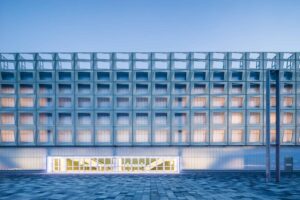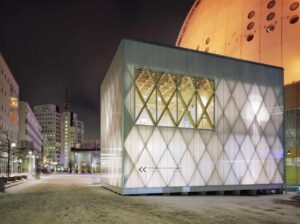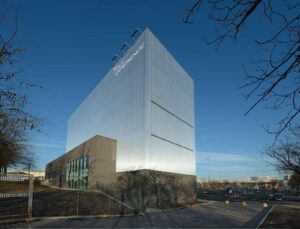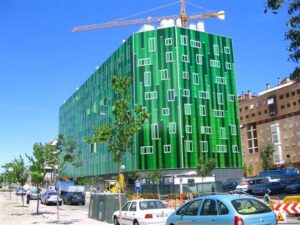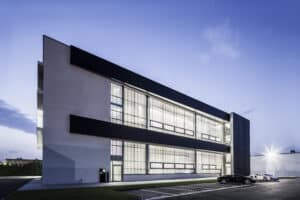
The use of polycarbonate in building design and construction has increased in popularity in European architecture due to its versatility. Polycarbonate is durable, lightweight, and highly insulative, which makes it ideal for building exteriors. This innovative material is commonly used in gymnasiums, stadiums, and other recreational facilities, in addition to nearly all commercial building applications.
In the late 20th century, polycarbonate was first used in Europe as a building material. It was found to be less expensive than glass, more lightweight, and available in Class A/CC1.
Multiwall polycarbonate is frequently used for translucent walls because it is highly insulative while allowing light through. It helps also helps designers and building owners achieve sustainable design and adaptive reuse goals. It is a 100% recyclable material, and its insulative and daylighting properties allow for energy savings.
Polycarbonate is 4X more impact resistant than glass; a common reason why it is used in stadiums and gymnasiums which are costly to keep lit, without the worry of shattering glass. Polycarbonate is also lightweight and can be quickly and easily installed. Individual panels can be cut and bent to conform to countless façade designs.
Further providing design freedom, polycarbonate daylighting systems can be customized with different finishes and colors. Because of its translucency, polycarbonate facades provide a beautiful “lantern” effect at night, appearing to glow from within.
Since its emergence, polycarbonate has evolved to keep up with the demands of building design and construction. Although it is more prevalent in major daylighting applications in Europe, it is becoming more widely used in North American applications also.


